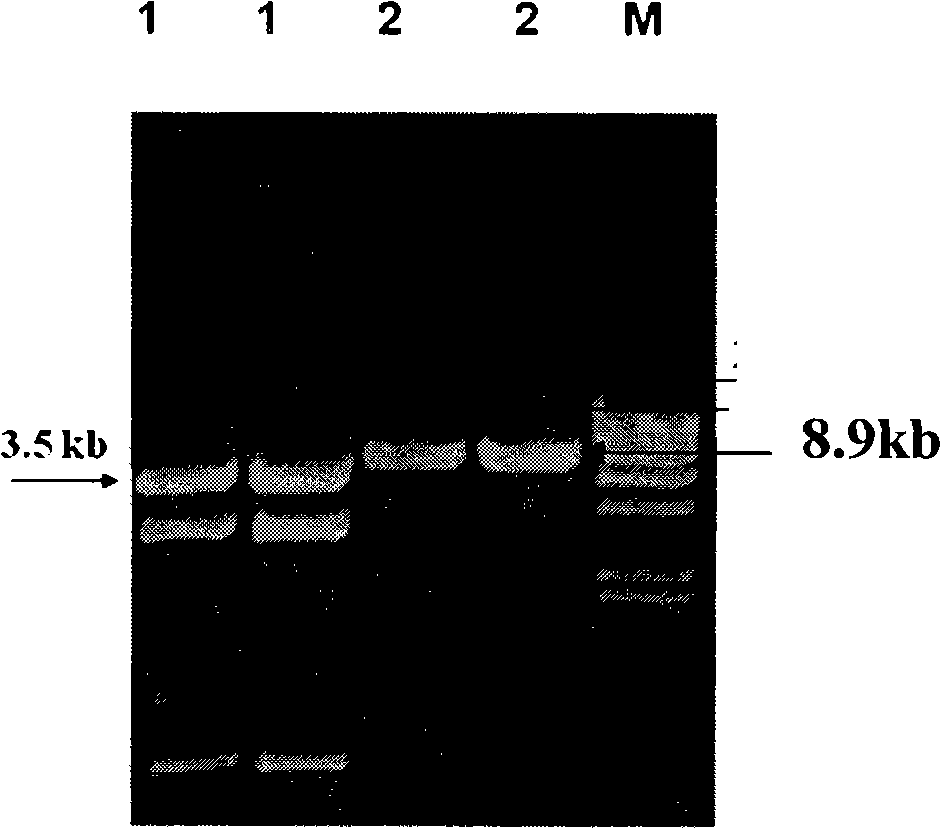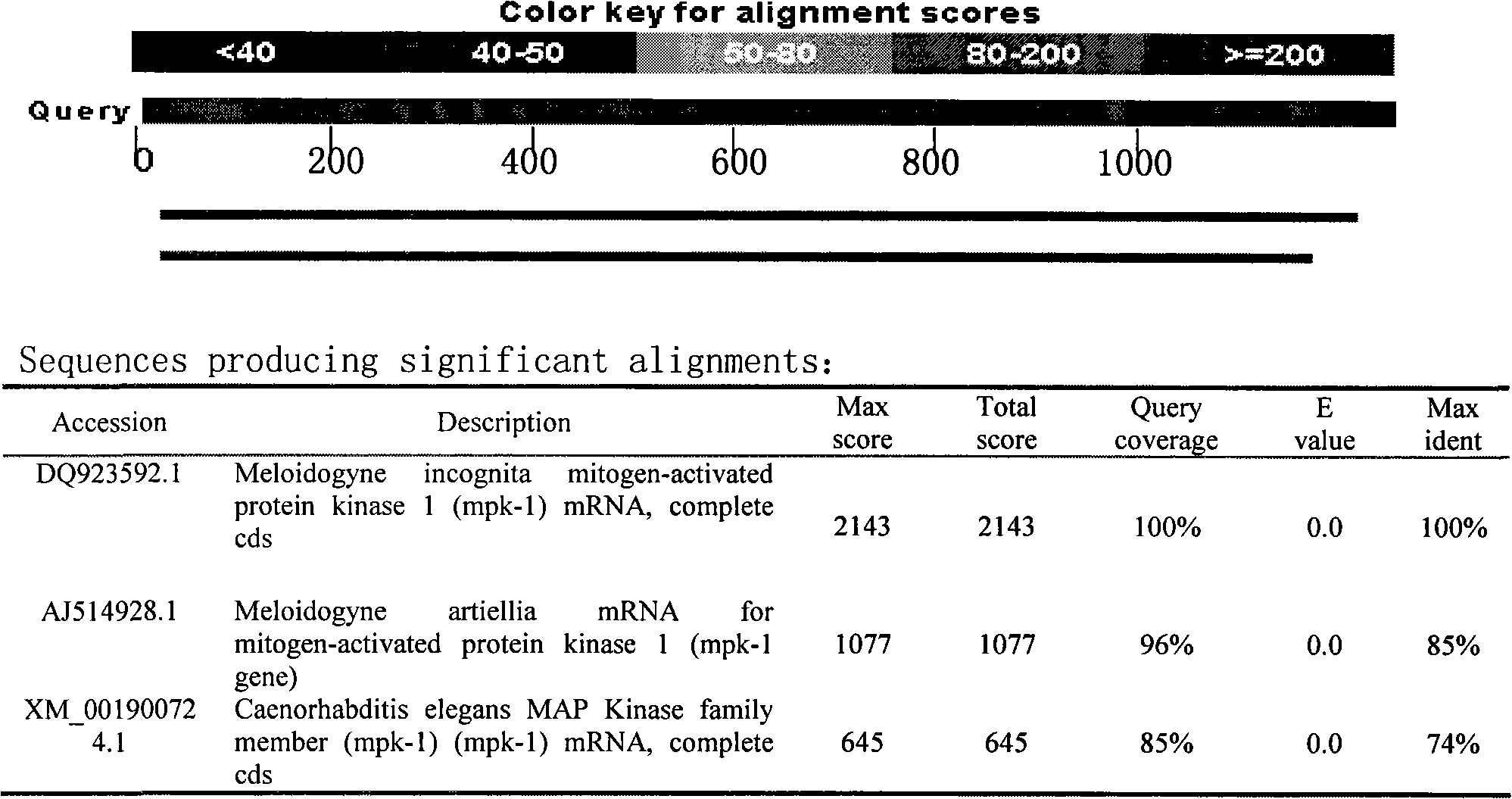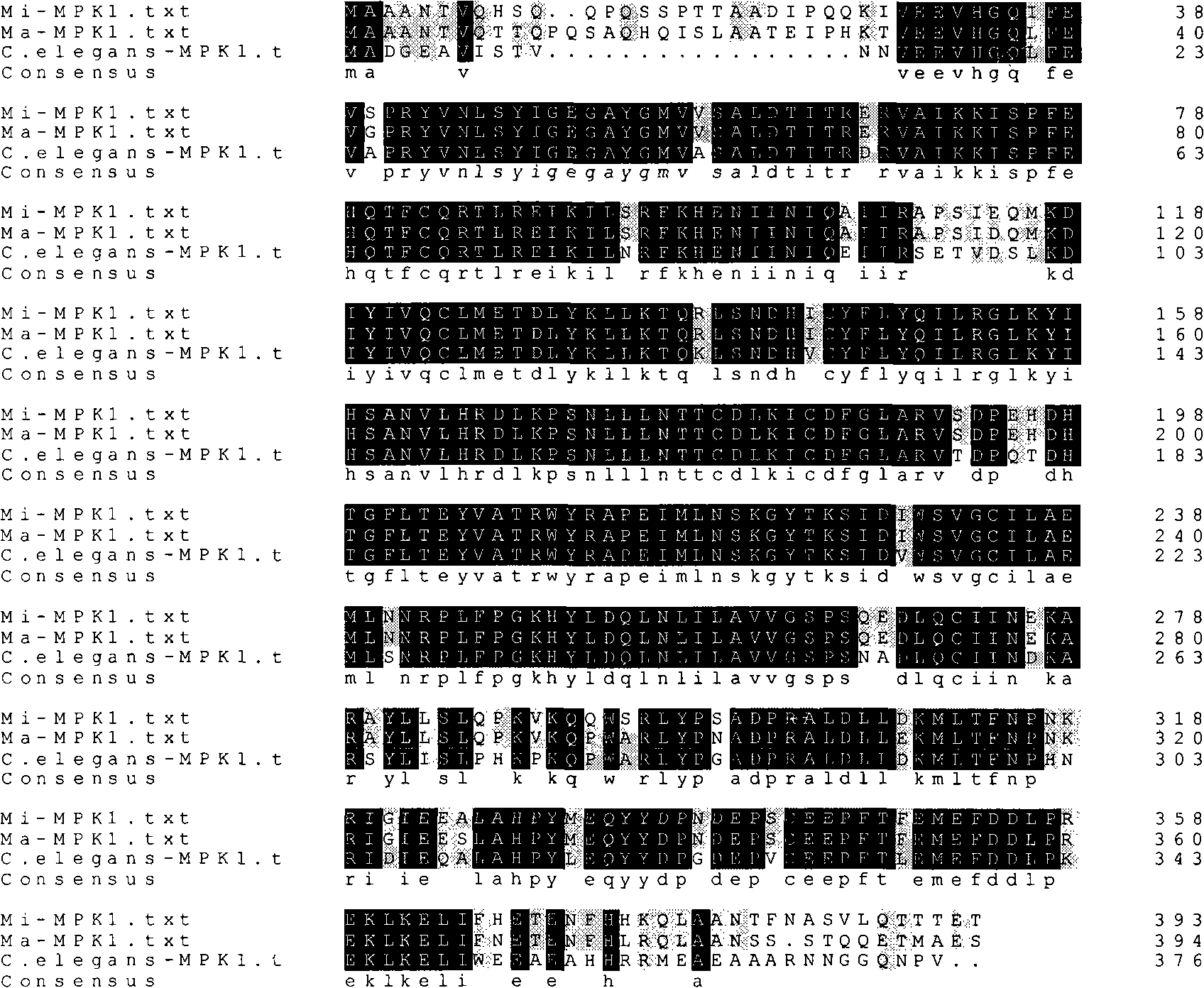RNA interference vector and use thereof
An RNA interference and carrier technology, applied in applications, recombinant DNA technology, and introduction of foreign genetic material using vectors, etc., can solve the problems of nematode race variation, lack of antigen material sources, and inability to meet production needs, and achieve root knots and egg masses. Effects of population reduction, reliable nematode control strategies, and effective nematode control strategies
- Summary
- Abstract
- Description
- Claims
- Application Information
AI Technical Summary
Problems solved by technology
Method used
Image
Examples
Embodiment 1
[0044] Embodiment 1: in vitro verification experiment
[0045] The dsRNA of MiMPK1 gene was synthesized in vitro, the egg masses and 2nd instar larvae of M. incognita were treated simultaneously by soaking method, and octopamine was used to stimulate the phagocytosis of 2nd instar larvae of M. incognita. The interference effect was verified in vitro. After the ovum block was immersed in the dsRNA of 2mg / ml for 1 day, it was observed that the number of 2 instar larvae hatched was significantly more than that of the control group, but its mortality rate reached more than 85%, while the mortality rate of the control group was not higher than 5%; The hatched nematodes and unhatched egg masses were inoculated into the roots of tomato plants. After 45 days, no root knots and egg masses were found in the tomato roots, indicating that the nematode larvae whose MiMPK1 gene was silenced lost their infectivity. After the egg mass was soaked in 2mg / ml dsRNA for 3 days, the number of hatch...
Embodiment 2
[0046] Embodiment 2: the acquisition of transfer RNA interference vector tomato plant
[0047] Step 1: Construction of RNA interference inducing vector
[0048] The RNA interference inducing vector pFGC5941 (gifted by the University of Leeds, UK, is a commonly used vector and can be purchased in the market) has a herbicide resistance (BAR) gene, and the restriction site is repeated with the insert, so it is necessary to construct a hygromycet-containing Insert the RNA interference inducing vector of pFGC5941 (3577bp) into the cloning vector pCAMBIA1300 with hygromycin selection marker (preserved by the Laboratory of Vegetable and Flower Research Institute, Chinese Academy of Agricultural Sciences, and can be distributed to the public)
[0049] pFGC5941 and pCAMBIA1300 were digested with EcoRI / PstI respectively ( figure 1 ), digested overnight at 37°C, the digested product of pCAMBIA1300 was electrophoresed and the 8.9kb fragment was recovered by gel cutting, and the 3.5kb fr...
Embodiment 3
[0071] Example 3: Detection of insect resistance of transgenic plants
[0072] Step 1 Preparation of explants for tomato transformation
[0073] (1) Soak the tomato seeds with 70% ethanol for 3min;
[0074] (2) Discard ethanol, add sterile water to wash twice;
[0075] (3) discard the sterile water, add 20% sodium hypochlorite for disinfection for 20 minutes;
[0076] (4) Discard sodium hypochlorite, blot excess water after rinsing with sterile water for 5-6 times;
[0077] (5) The seeds are moved into a triangular flask equipped with MS medium, 30 seeds in each bottle, and placed evenly;
[0078] (6) Culture at 26-28°C in the dark and light culture for 6-7 days after germination until the cotyledons open at an angle of 120°;
[0079] (7) Put the tomato seedlings to be cut on the filter paper, clamp the hypocotyl part of the seedlings with tweezers, make the two cotyledons overlap and lay flat on the bottom of the petri dish, cut off the top of the cotyledons, and then cut...
PUM
 Login to View More
Login to View More Abstract
Description
Claims
Application Information
 Login to View More
Login to View More - R&D
- Intellectual Property
- Life Sciences
- Materials
- Tech Scout
- Unparalleled Data Quality
- Higher Quality Content
- 60% Fewer Hallucinations
Browse by: Latest US Patents, China's latest patents, Technical Efficacy Thesaurus, Application Domain, Technology Topic, Popular Technical Reports.
© 2025 PatSnap. All rights reserved.Legal|Privacy policy|Modern Slavery Act Transparency Statement|Sitemap|About US| Contact US: help@patsnap.com



